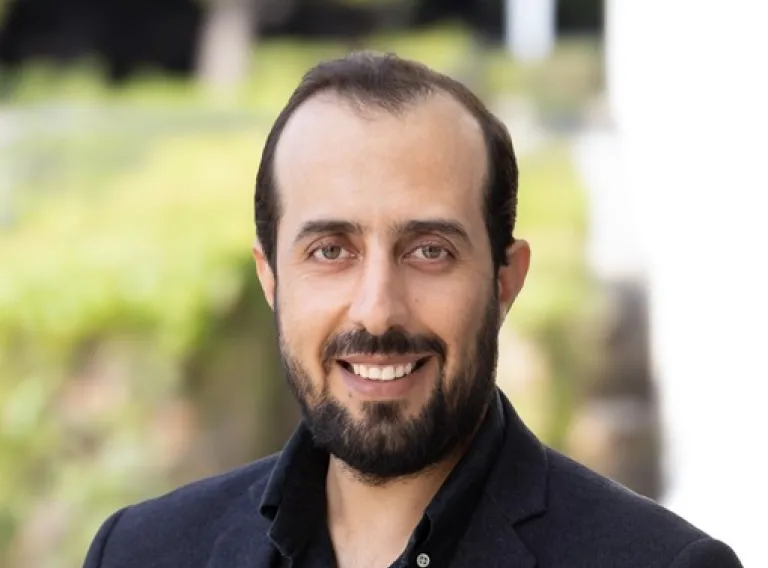https://eu01web.zoom.us/j/65279823283
Defense will be held on Zoom
Doctoral candidate:
Abdul Matin Jami
Title of thesis:
Multi-Hazard Assessment of Long-Span Bridges
Opponents:
Dr. Tatjana Isakovic, Professor at the Faculty of Civil and Geodetic Engineering, University of Ljubljana, Slovenia
Dr. Christian Málaga-Chuquitaype, Associate Professor at the Faculty of Civil and Environmental Engineering, Imperial College London, UK
Advisor:
Dr. Rajesh Rupakhety, Professor at the Faculty of Environmental and Civil Engineering, University of Iceland
Other members of the doctoral committee:
Dr. Bjarni Bessason, Professor at the Faculty of Environmental and Civil Engineering, University of Iceland
Dr. Jónas Þór Snæbjörnsson, Professor at the Faculty of Engineering, Reykjavik University
Chair of Ceremony:
Dr. Hrund Ólöf Andradóttir, Professor and Head of the Faculty of Civil and Environmental Engineering, University of Iceland
Abstract:
Abstract: This PhD research project focuses on the multi-hazard evaluation of long-span bridges and the development of novel solutions to improve the effectiveness of structural control schemes. In particular, the study investigates seismic response mitigation using passive devices such as tuned mass dampers and lead rubber bearings. The research aims to examine the response of both uncontrolled and passively controlled long-span bridges—specifically suspension and cable-stayed types—subjected to near-fault earthquake excitations and strong wind forces. A key objective is to quantify the probabilities of exceeding various performance limit states and to establish fragility functions for these structures under combined seismic and wind hazards. The project further explores the feasibility and efficiency of passive control systems in reducing structural fragility. These objectives are motivated by several core research questions. First, due to their considerable length and inherent flexibility, suspension and cable-stayed bridges are especially vulnerable to long-period and impulsive motions characteristic of near-fault earthquakes. The study seeks to understand the extent to which near-fault effects compromise the safety of such bridges and whether their fragility under these conditions is significantly greater than under ordinary ground motions. It also evaluates the effectiveness and practicality of using passive control devices, such as tuned mass dampers, to mitigate this fragility. In addition, the research addresses how the combined effects of stochastic wind and seismic loads can be integrated into fragility analysis and the implications for design practice. To investigate these questions, detailed finite element models were developed using SAP2000, MATLAB, and OpenSees. The models include a three-span concrete bridge, multiple five-span concrete bridges, a 300-meter span cable-stayed bridge in Iceland (Ölfusá River), and a 1500-meter span suspension bridge in China (Runyang River). Wind forces were simulated using stochastic processes based on the spectral representation method, while seismic input was derived from real ground motion records from past earthquakes. A novel simulation methodology was also implemented to generate over 55,000 pulse-type near-fault ground motions for comprehensive evaluation of their effects. The findings indicate that well-optimized passive control systems can significantly reduce structural responses under both seismic and wind loading. Fragility analyses confirm the effectiveness of tuned mass dampers in decreasing structural vulnerability and, in certain cases, enhancing pier moment capacity, particularly when vertical seismic components are considered. The study also identifies bridge bearings as critical elements influencing overall seismic performance, underscoring the importance of post-earthquake inspection and design strategies that facilitate their replacement. Given Iceland’s proximity to active fault lines, the results highlight the importance of accounting for near-fault effects in the seismic design and long-term resilience of critical infrastructure.
About the doctoral candidate:
Abdul Matin Jami is a Ph.D. candidate in Civil and Environmental Engineering at the University of Iceland. He began his doctoral studies in October 2019 under the supervision of Professor Rajesh Rupakhety, with Professor Bjarni Bessason and Professor Jónas Þór Snæbjörnsson serving on his Ph.D. committee. His research focuses on the multi-hazard assessment of long-span bridges, with an emphasis on the combined effects of near-fault ground motions and strong wind forces, as well as the use of passive control systems to enhance structural performance. Before starting his Ph.D., Matin earned a Master’s degree in Structural Engineering from the Indian Institute of Technology Delhi and a Bachelor's degree in Civil Engineering from Herat University in Afghanistan. He has several years of professional experience in structural and construction engineering, including roles as a design engineer and project engineer on various infrastructure projects. This hands-on experience has contributed significantly to the practical relevance of his academic work. In 2023, Matin moved to the United States and has since continued his Ph.D. studies remotely while actively engaging with the academic and engineering community. He is married to Razia Jami, who has a background in engineering and design, and they have a son named Zayd. Matin’s journey reflects a combination of academic excellence, resilience, and deep commitment to contributing to the fields of civil engineering and academic research.

Share
Buses 14, 1, 6, 3 and 12 stop at the University of Iceland in Vatnsmýri. Buses 11 and 15 also stop nearby. Let's travel in an ecological way!
